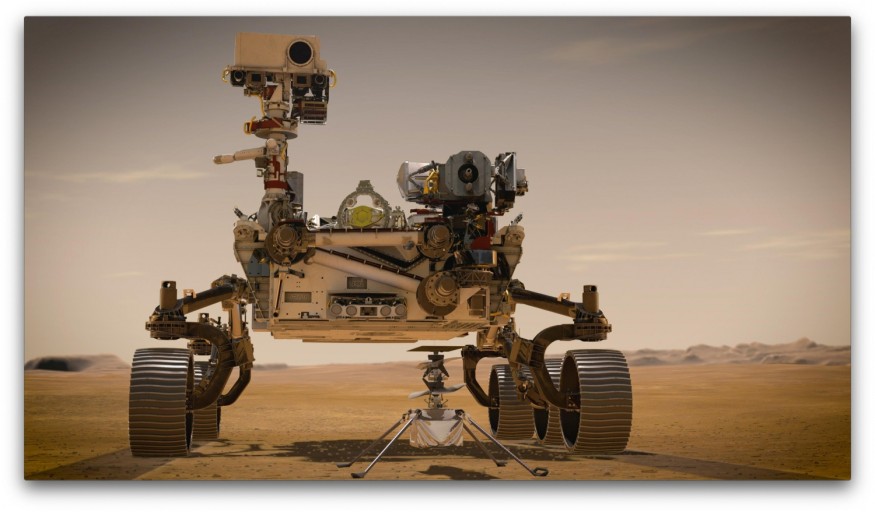NASA delays the first flight of the Ingenuity helicopter on Mars.

Portrait of Perseverance and Ingenuity (Artist's Concept)
The 4-pound (1.8-kilogram) robotic helicopter, which is currently attached to NASA's Perseverance rover, will now take off on the Martian surface by April 11 at the earliest.
The deployment of Ingenuity, commonly known as 'Ginny,' was initially scheduled for April 8.
Ingenuity would be the first powered and operated flight of an aircraft on a planet other than Earth if it is successful.
Ingenuity carries the fabric covering one of the Wright brothers' plane wings, known as the Flyer, during the first-powered controlled flight on Earth in 1903.
The announcement was made on Twitter by NASA's Jet Propulsion Laboratory, but they did not explain the slight delay.
"#MarsHelicopter is preparing to do something that's never been done: controlled, powered flight on another planet," it tweeted.
"Takeoff is now slated for no earlier than April 11, with data arriving on Earth on April 12."
Come fly with us. #MarsHelicopter is preparing to do something that's never been done: controlled, powered flight on another planet. Takeoff is now slated for no earlier than April 11, with data arriving on Earth on April 12. https://t.co/TNCdXWcKWE pic.twitter.com/JSep5lcKhR
— NASA JPL (@NASAJPL) April 1, 2021
NASA Prepares to Deploy Mars Rover's Helicopter Ingenuity
NASA announced on Wednesday that Perseverance started 'cutting it loose' and putting Ingenuity on Martian soil now that all four legs are down.
After identifying a suitable test flight site - which NASA calls 'airfield' - the NASA team is gradually releasing the craft in several measures to get it safely onto the surface.
The helicopter takes some time to unfold and officially deploy for the trip. NASA officials said it takes about six sols, or six Mars days (one sol is equivalent to about 24 hours and 40 minutes on Earth, or a little more than one Earth day).
NASA has set aside 30 Martian days to unpack the helicopter and ready it for its historical but modest first spin.
It will ascend slowly and vertically to a height of around 10 feet (3 meters), hover for 30 seconds, rotate in the air, and then gently land.
Ingenuity intends to help the robot lab on wheels search for signs of ancient microbial life on Mars and collect rock specimens for return to Earth through future Mars missions.
Deployment That Has Never Been Done Before
Perseverance is home to Ingenuity's base station, which allows the spacecraft to communicate with mission controllers on Earth.
Farah Alibay, Mars Helicopter integration lead for the Perseverance rover, said this form of deployment has never been done before.
"Once we start the deployment, there is no turning back - all activities are closely coordinated, irreversible, and dependent on each other," Alibay said in a statement.
"If there is even a hint that something isn't going as expected, we may decide to hold off for a sol [a Martian day] or more until we have a better idea what is going on."
JPL intends to record the entire exercise with cameras installed on Perseverance, parked a short distance away, and transmit pictures to Earth hours later.
Ingenuity also has two cameras on its cube-shaped base: a color camera with a horizon-facing view for terrain photos and a black-and-white camera for navigation.
Check out more news and information on Space on Science Times.












